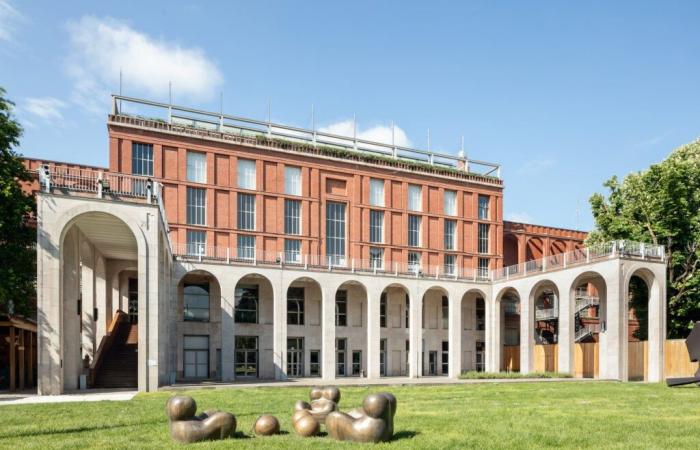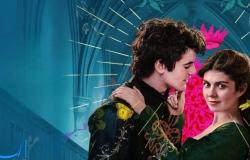The book examines a 17-year time span Athena. The female presence of the Monza-Milan Biennial-Triennial 1923-1940, which shows works by female architects, sculptors, painters and artisans: with their activities they testify to what the various schools, institutions and companies active in our country at the time have achieved. The creators of these works were able to valorise the knowledge of women, in the various events, first biennial and then triennial, hosted in the Villa Reale of Monza and then in the headquarters of Triennale Milano: it is precisely in those rooms that the first nucleus of that design that will forcefully assert itself after the Second World War.
Unpublished stories of Italian architects and designers of the early twentieth century
The authors – Anty Pansera and Mariateresa Chiricoci – propose a meticulous research carried out by analyzing the pages of exhibition catalogues and magazines such as Emporium And Domus. The aim is to produce a monumental list of biographies that allows us to explore and learn about unpublished stories, events capable of restoring the richness of what women have brought as a gift to the new generations while contributing to the development of Italy. They did it with “determination and pragmatism” specifies Carla Morogallo, general director of Triennale Milano since 2022, when presenting the volume. Also reminding us that in 1947 the Triennale of that year was “daughter of uncertain times”, as Linda Levi notes, but a harbinger of future successes.
The article continues below
At the origins of the Triennale Milano exhibitions
The starting point is the conference Modern decorative and industrial artswhich represents “an exhortation to the evolution of craftsmanship as a key to possible cultural development, qualifying and worthy of international attention. An invitation to push the craftsman into a new dimension, made of trust in his own abilities and to make him understand the potential and social importance of his work”. In 1933, the V Triennale settled in the Palazzo dell’Arte designed by Giovanni Muzio, a flexible “container” for an exhibition that was at that point established. The sculptural elements are by Mario Sironi who, with Gio Ponti, is among the organizers of the controversy in defense of art and architecture in the “unity of the arts” which, with Ponti’s motto “style and civilization”, develops the contents of the exhibition . But who are the authors present?
The biographies of dozens of designers to know
For Anty Pansera, after the volume on the Bauhaus students, it was essential to return to Italy to highlight these protagonists. Reconstruct the events which will certainly be enriched over time with the launch of new research resulting from the list of 463 names reported in the volume. Of these: 70 of these refer to schools, companies, institutions, 393 refer to people, 31 do not appear in the catalogs but emerged from other sources. Women belonging to the nobility and the cultured bourgeoisie who founded and opened professional schools for the teaching and transmission of ancient techniques, introducing many others to work who were freed from the harshness of that in the factory or in the fields. Some foreigners, researchers, collectors of ancient lace and various artefacts study and re-propose thanks to the birth of the Art Institutes with the Gentile reform and with what precedes it such as the exhibitions in Monza and Milan, the courses and initiatives of the Humanitarian Society where many women have taught, starting with those present in the exhibition at the VII Triennale dedicated to lace and embroidery, curated by Emilia Rosselli in Kuster, with four designers: Germana Cattadori, Carla Pagani, Anita Nespoli and Giulia Veronesi.
From Elvira Luisa Morassi to Stefania Filo Spaziale
Between 1908 and 1923 Maria Montessori was a point of reference for the diffusion and development of her method at the Umanitaria of Milan, supported by Augusto Osimo who contributed to the renewal of the culture of the time. Among the protagonists is Gaetana Calvi, who graduated in Engineering from the Polytechnic of Milan in 1914; Elena Luzzatto in Architecture in Milan in 1925. In 1927 Elena Campi became an architect and her work was published in issue 11 of Domus. Elvira Luisa Morassi graduated from the Technical Institute of Gorizia in 1923, she enrolled in Architecture in Milan and followed Piero Portaluppi’s course. She completed her training in Ponti’s studio in 1927 and graduated in 1928. She was in Paris the following year and returned to Gorizia, she was the first Italian woman to open her own studio. In 1933 she participated in the V Triennale representing the Institute for Crafts and Small Industry with her project for the furnishing of the Media House. Celestina Bellosi attended Piero Portaluppi’s studio in 1932. Stefania Filo of the Torre di Santa Susanna was the first member of the Order of Architects of Naples, with the number 36. She would build the first skyscraper built in her city. Diplomacy remained denied until 1960, when the Constitutional Court established the illegitimacy of the exclusion of women. In 1967 the doors of the barracks also opened, but they could only enter in 1999.
The authors of the book on the designers of the Monza Biennials and Milan Triennials
Anty Pansera, after studying history of art and design, tackles the History and news of the Triennale (Longanesi, 1978); with Mariateresa Chirico and Cristina Daniele The Historical Gallery of the Triennale (Charta editore, 2001) and again withChirico 1923-1930, Monza: towards the unity of the arts (Silvana Editoriale 2004). For her interest in the institution, she was on the Board of Directors of the Foundation from 2012 to 2015 and later on the Scientific Committee. Mariateresa Chirico researcher of art history of the 20th century century studies with particular interest the Futurism, decorative and applied arts and Italian industrial design. Recovers the work of female figures, addresses the glass production of the twentieth century with the Altar Glass Museum, curates numerous artists’ archives. Chirico herself provides the reason for her dedication to Athena, recalling that she is the goddess of wisdom and knowledge, her reasons for living, and the sacred owl represents the ability to see in the night what others do not see. Goddess of the arts, industrious and patron of artists appreciates the ingenuity and creations of the mind. She is a strong, indomitable warrior, armed with a helmet, shield and spear, she wears the dress embroidered by girls and she represents the women highlighted in the volume because they are capable of fighting with the ability to discern and balance.
Mario Pisani
Anty Pansera, Mariateresa Chirico ‒ Athena. Female presence at the Monza-Milan Biennials-Triennials 1923-1940
Nomos Edizioni, Busto Arsizio (VA) 2024
402 pages, €29.90
ISBN 9791259581501
DISCOVER THE BOOK HERE
Artribune is also on Whatsapp. Simply click here to subscribe to the channel and always be updated






